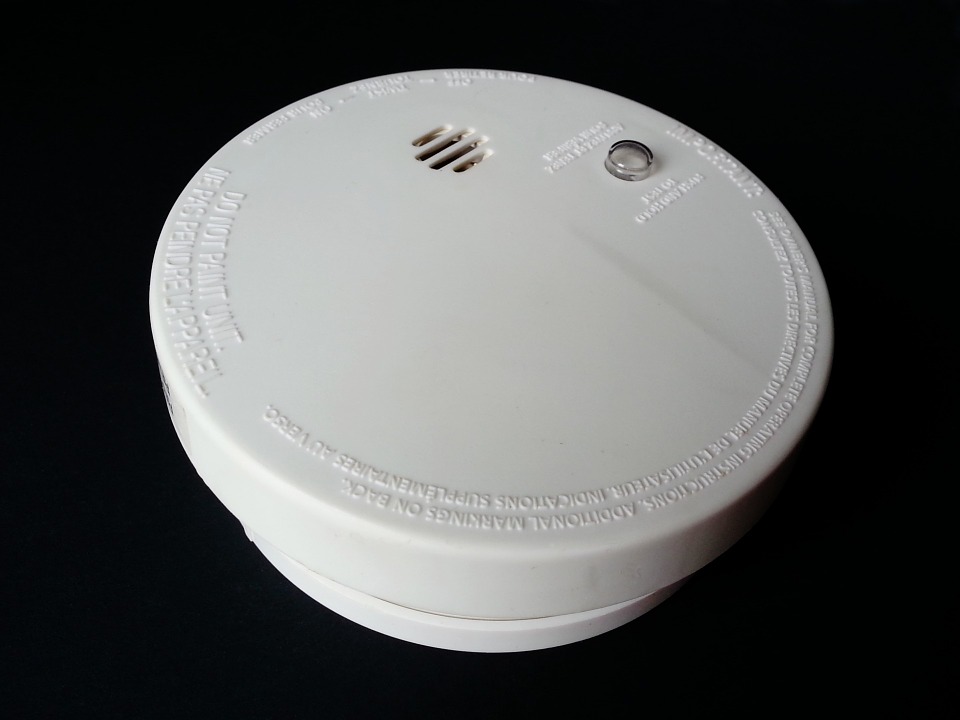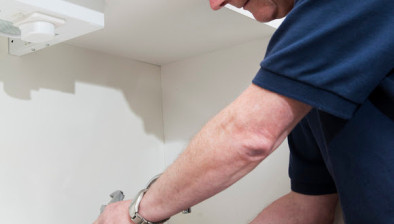Campaign urges homeowners to install interlinked alarms ahead of rule change
Homeowners are being urged to install interlinked heat and smoke alarms in a nationwide media campaign launched before new fire safety laws come into effect next year.

From February all homeowners will be required to have interlinked alarms under legislation brought forward after the Grenfell Tower tragedy in 2017. These alarms significantly reduce casualties by alerting everybody in a property to a fire. Most homes will also require a carbon monoxide alarm.
Private rented and new-build homes must already meet these standards, but from February they will apply to every home in Scotland, regardless of age or tenure.
The cost for an average three-bedroom house which requires three smoke alarms, one heat alarm and one carbon monoxide detector is estimated to be about £220. This is based on using the type of alarms that can be installed by the homeowner, without the need for an electrician. The Scottish Government is providing £500,000 to help eligible older and disabled homeowners with installation, in partnership with Care and Repair Scotland.
Housing secretary Shona Robison said: “One death from a house fire is one too many, and improving fire safety remains our utmost priority. In February Scotland will become the first UK nation to require every home to have interlinked fire alarms, which significantly reduce the risk of injury or death. If there is a fire in one room it will set off alarms throughout the property, giving residents more time to escape.
“Homeowners are generally responsible for paying for works to protect their property, but we know some may not be able to meet the cost of fitting these alarms. That is why we are providing £500,000 to help disabled and older people, on top of the £1 million we have already provided to the Scottish Fire & Rescue Service to install alarms in owner-occupied homes identified as being at highest risk.”
Alasdair Perry, head of prevention and protection at the Scottish Fire and Rescue Service, said: “Having the earliest possible warning of a fire in the home can and has saved lives and property. Having interlinked alarms installed will allow everyone, anywhere in the house to take action as quickly as possible.
“The Scottish Government has provided financial support to our Home Fire Safety Visit programme, which will allow us to fit to the new standard in the homes of those identified through our robust criteria as being at higher risk. However, if we go to any property that has no detection, we will still provide a battery-operated stand-alone smoke detector and advise the occupant about the new standard for the fire and smoke alarms required by the legislation in all Scottish homes.”
Robert Thomson, national director of Care and Repair Scotland, added: “Care and Repair Scotland has assisted older and disabled homeowners in repairing and adapting their homes since 1988. Therefore, we are pleased to be administering the fire alarms assistance package for lower-income older and disabled homeowners. This funding will support our overall aim to help homeowners live independently and safely at home for as long as possible.”
The campaign will launch today and will comprise adverts across TV, radio and digital channels, with printed leaflets provided at local libraries.
From February 2022 all homes will need to have one smoke alarm in the most frequently used room, one in every circulation space on each storey, and a heat alarm in each kitchen. Alarms should be ceiling mounted and interlinked. Where there is a carbon-fuelled appliance, such as a boiler, fire or flue, a carbon monoxide detector is also required, although this does not need to be linked to the fire alarms.
All these alarms can be either long-life sealed and battery operated, or mains-operated. However, mains-operated alarms must be installed by a qualified electrician. If a homeowner opts to install tamper proof long-life lithium battery alarms, the average total cost is estimated to be about £220.
Homeowners who have questions about how this change in the law might affect their home insurance should check with their provider.
To be eligible for support from Care & Repair Scotland, you must live and own your home that has a Council Tax banding of A-C. You must also either be of state pension age and in receipt of guaranteed Pension Credit, or have a disability and be in a support group for Employment and Support Allowance.
Social landlords have been working to ensure that the new alarms are in place, where needed. The Scottish Government has made over £15 million of loan funding available for social landlords ensuring that tenants are safe in their homes.
Age Scotland has welcomed the initiative to increase public awareness around installing interlinked fire and smoke alarms, but says there is still a long way to go to ensure all households affected by the significant change are able to meet requirements.
The charity hopes it will also help address ongoing concerns, such as the ability for people on low incomes to afford the measures, where to access trustworthy support on installation, and the short-term risk of scams and rogue traders.
Age Scotland previously called on the Scottish Government to delay the deadline for homeowners to meet the requirement due to a severe lack of public awareness and to make up for the year lost due to COVID-19, ultimately resulting in an extension to 1 February 2022.
Age Scotland’s chief executive, Brian Sloan, said: “Good home fire safety standards are vital, and we appreciate the Scottish Government making this support and guidance available to assist homeowners in complying with the new legislation.
“The looming deadline for the installation of interlinked fire alarms caught the majority of homeowners by surprise last year and we’re very glad an extension was granted, albeit only for a year.
“However, there are still a number of concerns we hope to see addressed ahead of the new deadline.
“There has been an underestimation of the scale of financial help that will be required by older households. There are 150,000 pensioners in Scotland living in poverty and hundreds of thousands more on low and fixed incomes, and our research has consistently shown high levels of anxiety from older people when it comes to affording bills.
“For example, two thirds of respondents in our Big Survey said that their energy bills had increased due to lockdown, with 13% struggling to pay and 38% taking measures to use less energy.
“It’s welcome news that Care and Repair Scotland will receive funding to administer a fire alarms assistance package for lower income older and disabled homeowners. We’re glad to see the Scottish Government pursuing this valuable avenue of providing affordable installations of fire alarms.
“Many older homeowners have voiced concerns over the affordability and cost of these devices, as well as where to access support to install them. The financial aspect will be a particular worry for those on low incomes who fall just outside eligibility criteria for support, as the average cost of the various interlinked alarms has been estimated at around £220, but this is not taking into account the added costs of installation and set up for those not able or comfortable doing this themselves.
“There is also still uncertainty about how home insurance policies, or home reports if buying and selling, may be impacted going forward, as well as how to prevent scammers and rogue traders from taking advantage of those worried about meeting the timescales for installation.
“We hope this initiative will lead to increased public awareness among homeowners about how to access support in meeting these important safety standards.
“Every household affected must have the time and resources to make safe and affordable decisions to meet requirements ahead of the deadline, and we’re grateful to see support available in both digital and non-digital formats to ensure the message reaches the half million over-60s in Scotland who do not use the internet.”








